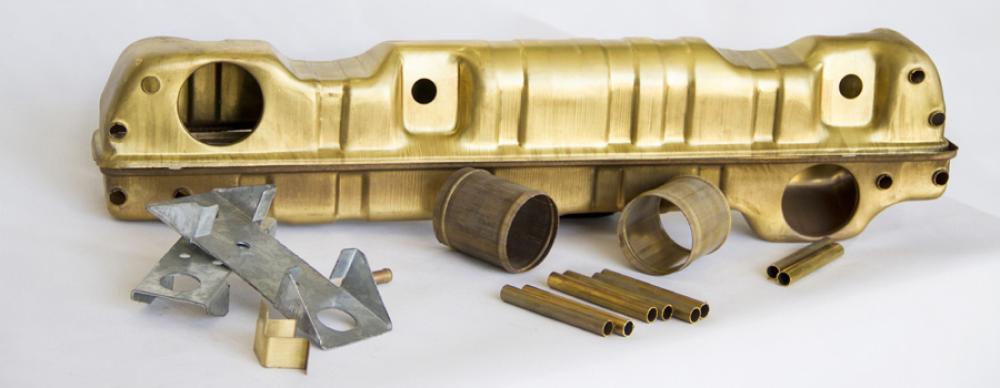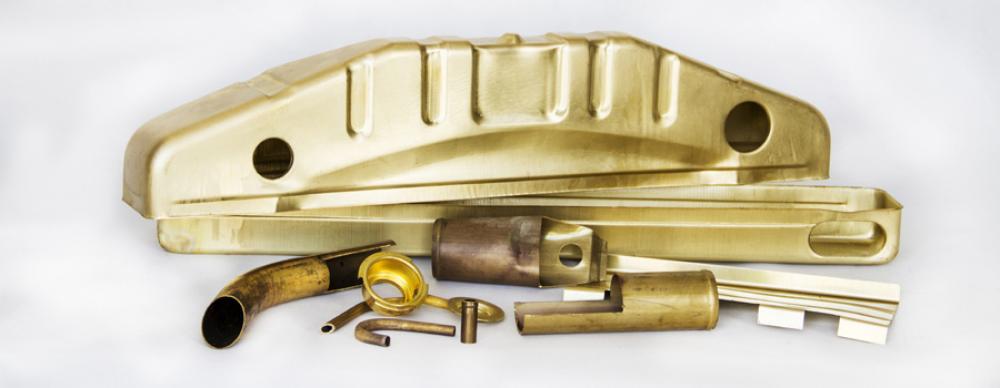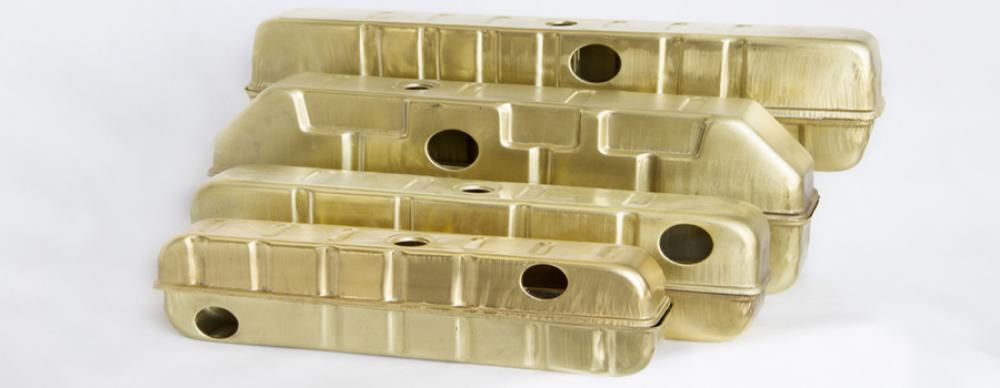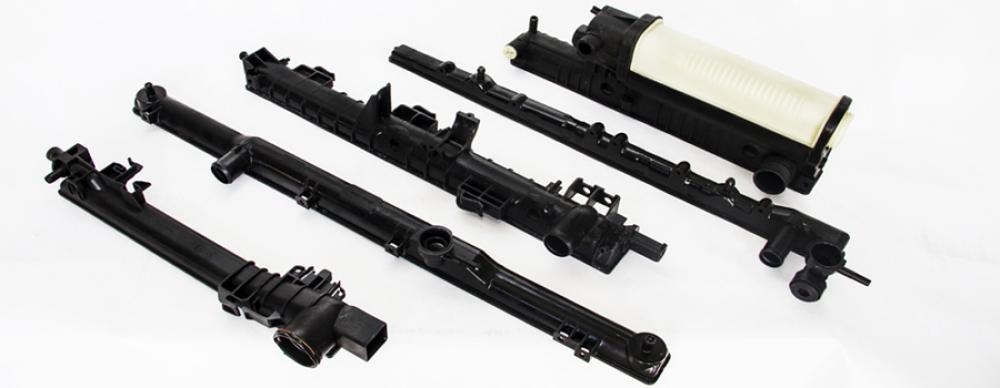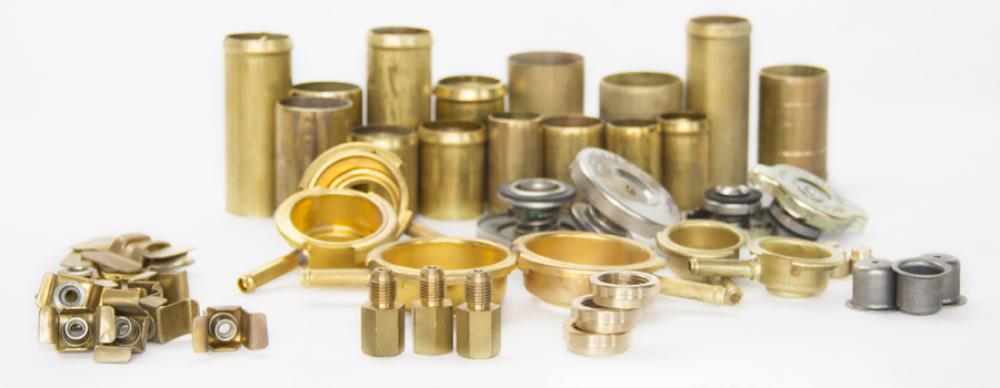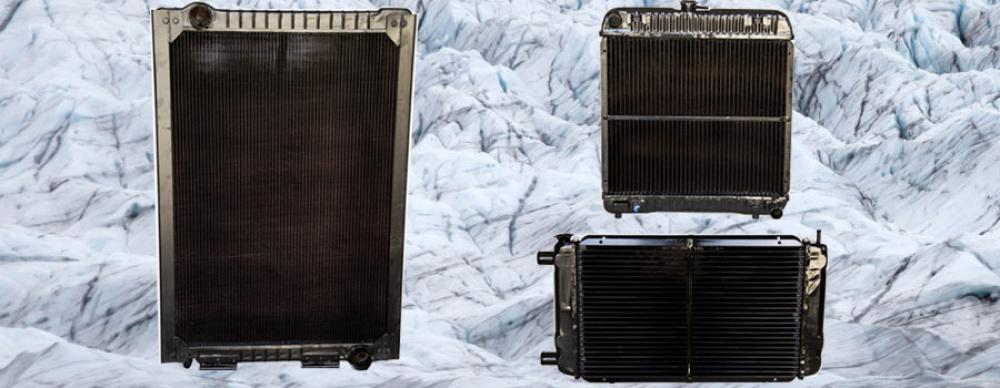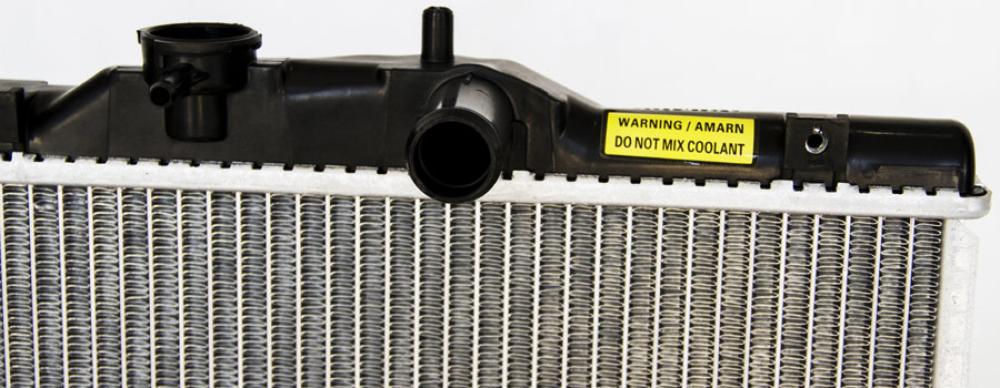Radiator Overview
The Heart Of The Cooling System:
- The Radiator is the most important part of the engine cooling system.
- It is a type of heat exchanger which is designed to transfer heat from the hot coolant (water in general) that flows through it to the air blown through it by the fan.
- The Radiator is normally mounted in the front of the engine.

Radiator Action:
Under normal operating conditions, hot engine coolant circulates through the radiator tanks and core tubes. Heat transfers into the core’s tubes and fins. Cooler air flows over and through the radiator fins so heat is removed from the radiator. This reduces the temperature of the coolant before it flows back into the engine.

A Radiator Typically Consists of Five Components:
- Radiator Core :– center section of the radiator. Made up of tubes and cooling fins.
- Radiator tanks :– metal or plastic ends that fit over the core tube ends to provide storage for coolant and fittings for hoses.
- Radiator Filler Neck :– opening for adding coolant. Also holds the radiator cap and overflow tube.
- Transmission Oil Cooler :– inner tank for cooling automatic transmission or transaxle fluid.
- Radiator Petcock :– fitting on the bottom of the tank for draining coolant.

Radiators Have Two Types "Crossflow and Downflow":
- The tanks on a downflow radiator are on the top and the bottom of the core. Hot coolant form the engine enters the top tank. The coolant flows downward through the core tubes. After cooling the coolant flows out of the bottom tank and back into the engine.
- A crossflowradiator is a more modern design that has its tanks on the sides of the core. The core tubes are arranged for horizontal coolant flow . The tank with the radiator cap is normally the outlet tank. A cross flow radiator can be shorter than a down flow radiator allowing for a lower hood line.


